- Industries
Industries
- Functions
Functions
- Insights
Insights
- Careers
Careers
- About Us
- Technology
- By Omega Team
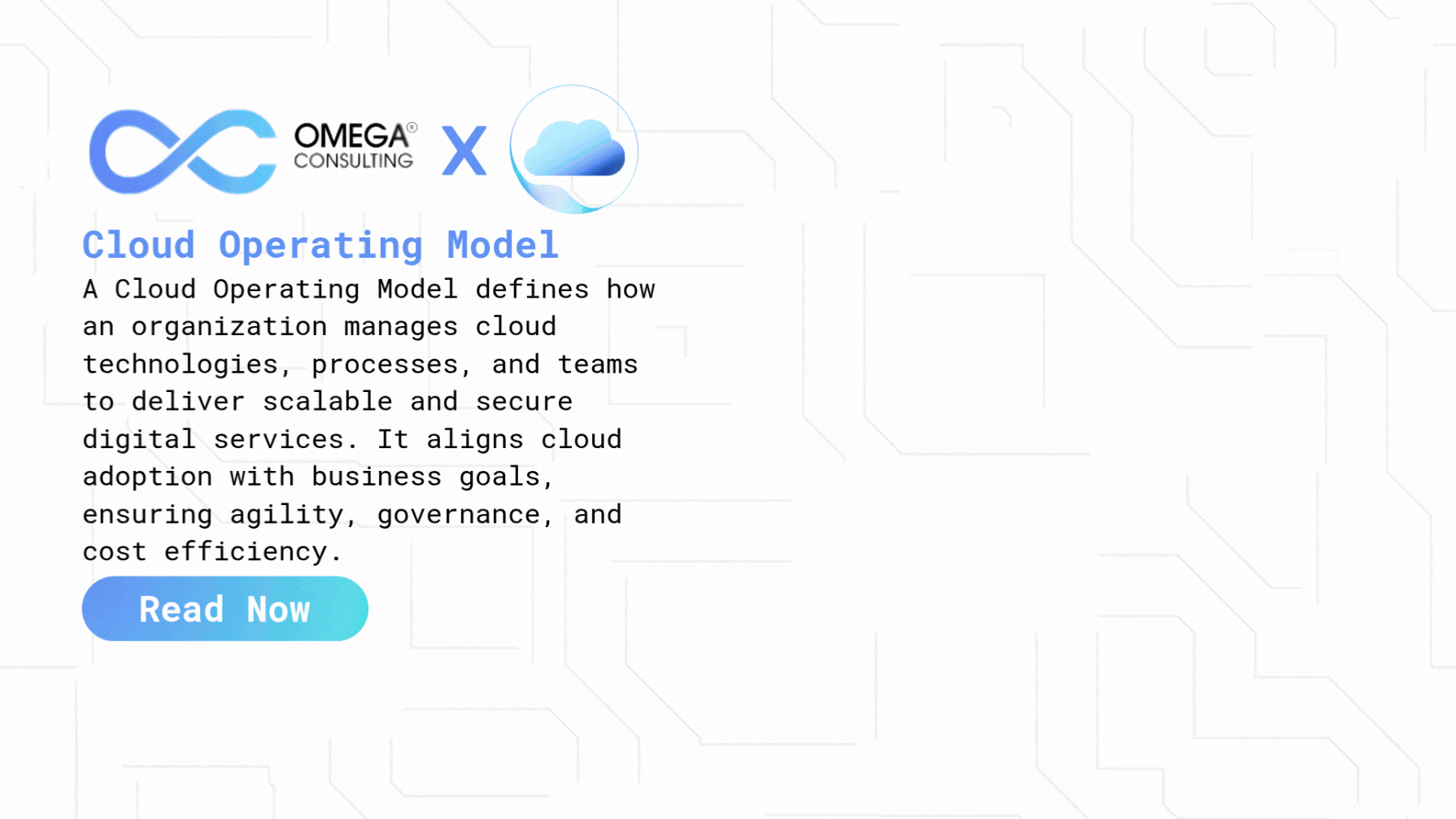
The advent of cloud computing has fundamentally reshaped the technological landscape, moving beyond a mere infrastructure shift to necessitate a complete transformation in how organizations operate. A “cloud operating model” isn’t just about leveraging cloud services; it’s a holistic approach encompassing people, processes, and technology to maximize the benefits of cloud adoption. This paradigm shift enables businesses to achieve unprecedented agility, scalability, cost efficiency, and innovation, fundamentally altering how IT services are delivered and consumed. Traditional operational models, designed for on-premises infrastructure, often struggle to keep pace with the dynamic, on-demand nature of cloud environments, making a dedicated cloud operating model imperative for success. This article delves into the core tenets of the cloud operating model, exploring its definition, key characteristics, profound benefits, critical challenges, and the evolving trends that will define its future, providing insights for businesses seeking to thrive in the cloud era.
What is a Cloud Operating Model?
A cloud operating model defines the organizational structure, processes, and technology stack required to effectively build, deploy, manage, and optimize applications and infrastructure in cloud environments. It’s a strategic framework that goes beyond simply migrating existing workloads to the cloud; instead, it focuses on leveraging cloud-native capabilities and adopting new ways of working that align with the principles of cloud computing. This model fundamentally differs from traditional IT operating models, which are often characterized by siloed teams, manual processes, and slow provisioning cycles. At its core, a robust cloud operating model emphasizes:
Automation: A cloud operating model prioritizes automation for infrastructure provisioning, deployment pipelines, and operational tasks. This reduces manual effort, minimizes errors, and accelerates delivery times. By automating routine processes, organizations achieve greater efficiency and speed in their cloud environment, fostering agility and faster time-to-market.
Agility: Agility in a cloud operating model involves fostering rapid iteration and continuous delivery. This is achieved by breaking down large projects into smaller, manageable components and empowering cross-functional teams. This approach enables organizations to respond quickly to changes, deliver value frequently, and improve collaboration across different parts of the business.
Cost Optimization: Cost optimization in a cloud operating model involves employing strategies and tools for continuous monitoring, management, and refinement of cloud expenditure. This ensures efficient resource utilization and aligns cloud costs directly with achieved business value. A dedicated focus on cost optimization helps organizations maximize their return on cloud investments and maintain financial control.
Security and Compliance: A cloud operating model emphasizes integrating security and compliance from the initial stages of cloud environment and development processes. This proactive approach, rather than treating security as a later addition, ensures a robust security posture and facilitates adherence to regulatory requirements throughout the cloud lifecycle.
Resilience and Reliability: A robust cloud operating model emphasizes resilience and reliability by designing inherently fault-tolerant systems with rapid failure recovery. It leverages cloud-native services to ensure high availability. This approach minimizes downtime, improves system performance, and contributes to a more stable and efficient IT environment.
Governance: Governance in a cloud operating model involves setting up clear policies, standards, and oversight to ensure cloud resources are used consistently and compliantly across the organization. This framework provides control and adherence to regulations, preventing inconsistencies and promoting best practices while enabling effective management of the cloud environment.
The shift to a cloud operating model often involves reorganizing teams around services or products rather than functional silos, adopting DevOps and SRE (Site Reliability Engineering) practices, and investing in new skill sets related to cloud architecture, automation, and security. It’s about enabling a culture of continuous improvement and innovation, where technology becomes a strategic enabler of business growth rather than a mere cost center.
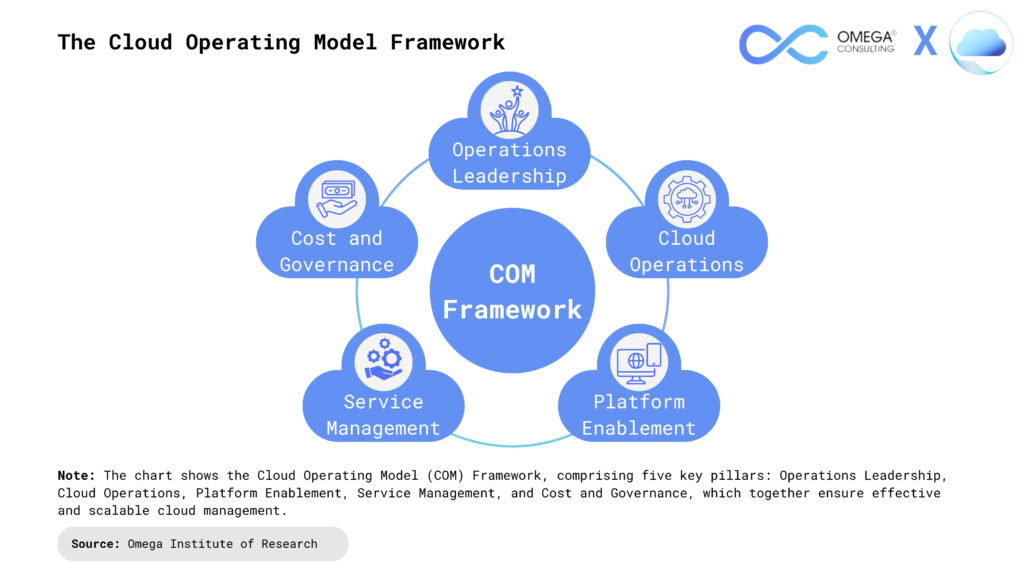
Key Characteristics of a Cloud Operating Model
A modern cloud operating model is characterized by several distinct features that differentiate it from traditional IT operations and enable organizations to fully harness the power of the cloud:
Automated Provisioning and Management: The model emphasizes extensive automation for provisioning infrastructure, deploying applications, and managing day-to-day operations through Infrastructure as Code (IaC) tools and continuous integration/continuous delivery (CI/CD) pipelines. This reduces manual errors, accelerates deployment cycles, and ensures consistency across environments by defining infrastructure and application configurations as code, enabling repeatable and scalable processes.
DevOps and SRE Culture: It integrates DevOps principles, fostering collaboration between development and operations teams, along with Site Reliability Engineering (SRE) practices focused on defining and achieving service level objectives (SLOs) through automation, monitoring, and proactive problem-solving. This cultural shift promotes shared responsibility, faster feedback loops, and a focus on reliability and operational excellence.
FinOps for Cost Management: The adoption of FinOps (Cloud Financial Operations) is central, bringing financial accountability to the variable spend model of the cloud by enabling cross-functional collaboration between finance, business, and technology teams to drive financial accountability for cloud spending. This involves continuous monitoring, forecasting, optimization, and allocation of cloud costs to ensure efficient resource utilization and maximize business value from cloud investments.
Shared Responsibility Model: Understanding and implementing the shared responsibility model between the cloud provider and the customer is crucial, clearly delineating who is responsible for what aspects of security, compliance, and operations. This clarity ensures that appropriate controls are in place at every layer, from physical infrastructure managed by the provider to application security and data protection handled by the customer.
Centralized Governance with Decentralized Execution: The model establishes centralized governance policies, guardrails, and best practices for security, compliance, and cost management, while empowering individual product or service teams with decentralized execution authority. This balance allows for organizational agility and innovation within a controlled and compliant framework, preventing shadow IT and ensuring adherence to enterprise standards.
Cloud-Native Architectures: While not strictly a characteristic of the operating model itself, a modern cloud operating model is typically optimized for and encourages the adoption of cloud-native architectures (e.g., microservices, serverless functions, containers ). These architectures align perfectly with the agile, automated, and scalable nature of the cloud operating model, allowing organizations to maximize the benefits of cloud infrastructure and services.
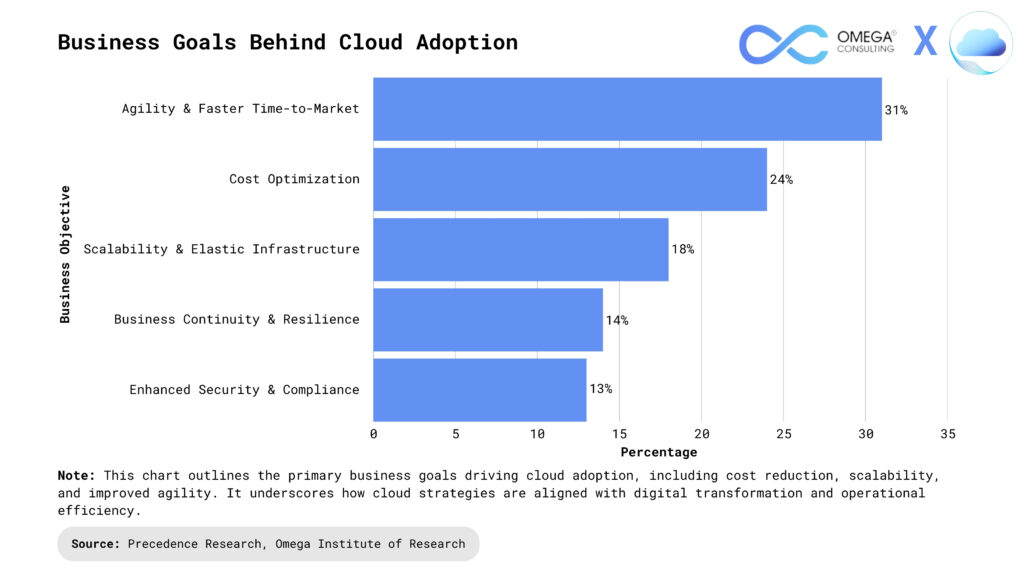
Benefits of Adopting a Cloud Operating Model
Adopting a well-defined cloud operating model offers transformative benefits that extend far beyond mere IT cost savings, impacting various aspects of an organization:
Increased Agility and Speed to Market: By automating provisioning, deployment, and operational tasks, and fostering cross-functional teams, organizations can significantly accelerate the development and release cycles of new features and products. This agility allows businesses to respond rapidly to market changes, seize new opportunities, and deliver innovation much faster than competitors operating with traditional models, creating a significant competitive advantage.
Optimized Cloud Costs: A dedicated FinOps practice within the operating model enables continuous monitoring, analysis, and optimization of cloud spending. This ensures that resources are utilized efficiently, waste is minimized, and costs are aligned with business value, leading to substantial savings and better financial control over variable cloud expenditures.
Enhanced Security and Compliance Posture: By embedding security into every stage of the development and operations lifecycle and leveraging cloud-native security services, organizations can establish a more robust security posture. This proactive approach helps in meeting stringent regulatory compliance requirements (e.g., GDPR, HIPAA), reducing the risk of data breaches, and ensuring continuous adherence to security best practices, leading to greater trust and reduced risk.
Improved Operational Efficiency and Reliability: Automation of routine tasks, adoption of SRE principles, and comprehensive monitoring reduce manual toil and operational errors, leading to more stable and reliable applications. Proactive identification and resolution of issues, coupled with automated recovery mechanisms, significantly minimize downtime and improve overall system performance and availability, resulting in a more resilient and efficient IT environment.
Greater Scalability and Resilience: The cloud operating model is inherently designed to leverage the cloud’s elastic scalability, allowing applications to automatically scale up or down based on demand, optimizing resource utilization and ensuring performance during peak loads. Additionally, distributed architectures and fault isolation mechanisms built into the model enhance the resilience of applications, making them less susceptible to single points of failure.
Fostered Innovation and Experimentation: By abstracting away infrastructure management and providing self-service capabilities, the cloud operating model empowers developers to experiment rapidly with new technologies and ideas without lengthy procurement or provisioning cycles. This cultural shift encourages innovation, allows for quick prototyping, and enables organizations to explore new business models and services with reduced risk and increased speed.
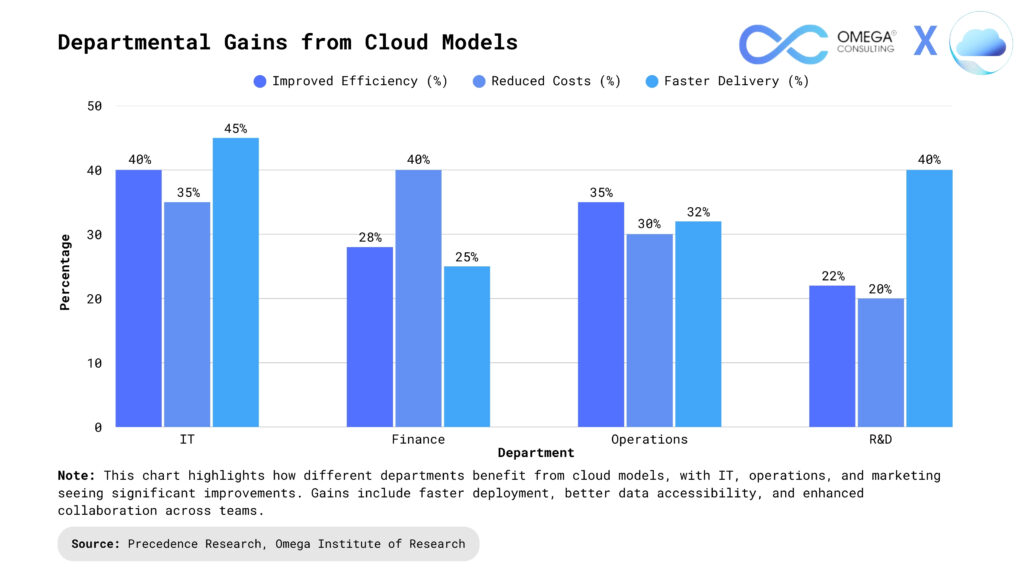
Challenges in Implementing a Cloud Operating Model
While the benefits of a cloud operating model are compelling, its implementation is not without significant challenges that organizations must proactively address:
Skills Gap and Training: The specialized skills required for cloud architecture, FinOps, site reliability engineering, and cloud-native development are often in high demand and short supply. Organizations must invest heavily in upskilling existing staff through comprehensive training programs and certifications, and strategically hire new talent, to bridge this knowledge gap and ensure effective cloud adoption.
Legacy System Integration: Many enterprises operate with complex legacy systems that are not designed for cloud environments, making their integration with cloud-native applications a significant technical challenge. This often requires substantial refactoring, API development, or adopting hybrid cloud strategies to ensure seamless data flow and functionality between old and new systems, adding complexity and cost to the transformation journey.
Security and Compliance Complexities: While cloud offers advanced security tools, managing security and compliance in a dynamic cloud environment introduces new complexities related to identity and access management (IAM), data governance across distributed services, and continuous monitoring for misconfigurations or threats. Ensuring adherence to regulatory requirements across multiple cloud providers and services demands sophisticated tooling and expertise.
Cost Management and Optimization: The pay-as-you-go model of cloud can lead to uncontrolled spending if not managed effectively. Without robust FinOps practices, proper tagging, and continuous monitoring, organizations can incur unexpected costs due to over-provisioning or inefficient resource utilization, making cost optimization an ongoing and critical challenge that requires dedicated focus and expertise.
Vendor Lock-in Concerns: Relying heavily on a single cloud provider’s proprietary services can lead to vendor lock-in, making it difficult and costly to migrate workloads to another provider in the future. While multi-cloud strategies can mitigate this, they introduce their own complexities related to management, governance, and maintaining consistent operations across different platforms.
Operational Tooling and Automation Maturity: Building a fully automated cloud operating model requires a significant investment in automation tools, observability platforms (logging, monitoring, tracing), and a mature CI/CD pipeline. Organizations often face challenges in selecting the right tools, integrating them effectively, and developing the expertise to maintain and evolve these automated workflows, which is crucial for efficient cloud operations.
Best Practices for Implementing a Cloud Operating Model
Successfully implementing a cloud operating model requires a strategic and disciplined approach, focusing on continuous improvement and adaptation:
Start with a Clear Strategy and Vision: Define clear business objectives for cloud adoption, outlining how the cloud operating model will support these goals. Develop a comprehensive roadmap that includes technology, process, and people transformations, ensuring alignment across the organization and a shared understanding of the desired future state.
Establish a Cloud Center of Excellence (CCOE): Create a dedicated, cross-functional Cloud Center of Excellence (CCOE) composed of representatives from IT, finance, security, and business units. The CCOE acts as a central governing body, defining standards, best practices, guardrails, and providing expertise and support for cloud initiatives across the organization, fostering consistency and accelerating adoption.
Implement FinOps Early and Continuously: Integrate FinOps principles from the outset to manage cloud costs effectively. Establish clear cost visibility, allocate costs to appropriate business units, implement budgeting and forecasting, and continuously optimize resource usage through right-sizing, reserved instances, and spot instances, ensuring financial accountability and maximizing cloud ROI.
Adopt a Security-First Mindset: Embed security into every stage of the cloud journey, from initial architecture design to continuous monitoring and operations. Leverage cloud-native security services, automate security checks in CI/CD pipelines, implement strong identity and access management (IAM) policies, and adhere to “zero-trust” principles, ensuring a proactive and robust security posture.
Define Clear Governance and Guardrails: Establish clear policies, standards, and guardrails for cloud resource provisioning, naming conventions, security configurations, and compliance requirements. Utilize cloud provider services (e.g., AWS Organizations, Azure Management Groups, Google Cloud Folders) to enforce these policies programmatically, ensuring consistent and compliant use of cloud resources across the enterprise.
Focus on Observability and Monitoring: Implement comprehensive monitoring, logging, and distributed tracing solutions across all cloud workloads. Collect and analyze metrics on application performance, infrastructure health, security events, and user behavior to gain deep insights, enable proactive problem-solving, and support data-driven decision-making for continuous improvement and optimization.
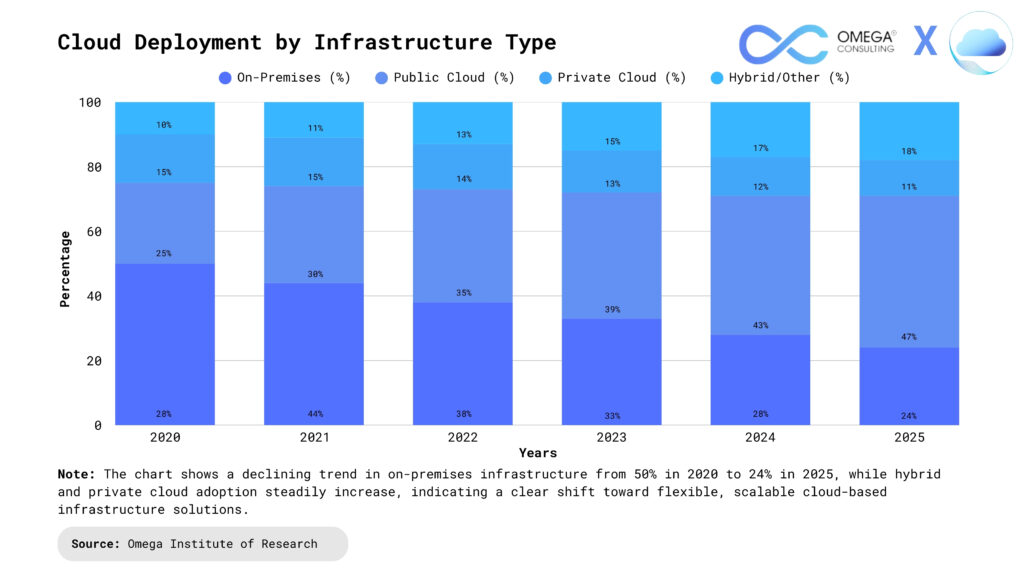
Future Trends Shaping the Cloud Operating Model
The cloud operating model is a dynamic concept, continuously evolving with advancements in cloud technology and changing business needs:
AI-Driven Operations (AIOps): The increasing use of Artificial Intelligence and Machine Learning in cloud operations will lead to more intelligent automation, predictive analytics for resource management, anomaly detection in monitoring data, and automated incident response. AIOps will enable more proactive and self-healing cloud environments, reducing manual intervention and improving operational efficiency.
Hybrid and Multi-Cloud Orchestration: As organizations leverage a mix of on-premises, private cloud, and multiple public cloud environments, the cloud operating model will increasingly focus on seamless orchestration and consistent governance across these diverse landscapes. This includes unified management planes, consistent security policies, and standardized deployment pipelines across heterogeneous environments.
Sustainability and Green Cloud: Growing awareness of environmental impact will integrate sustainability considerations into the cloud operating model. This includes optimizing resource utilization to reduce energy consumption, leveraging cloud provider’s sustainable practices, and designing applications for energy efficiency, making “green cloud” a measurable and strategic objective.
Shift-Left Security and Compliance: The practice of “shifting left” security and compliance will become even more ingrained, with automated security checks, policy enforcement, and compliance validation happening earlier in the development lifecycle (e.g., within IDEs and CI/CD pipelines). This proactive approach ensures that security is baked in from the start, minimizing vulnerabilities and reducing the cost of remediation.
Composable Enterprise and Ecosystem Integration: The cloud operating model will support the emergence of more composable enterprises, where business capabilities are delivered as modular, reusable services. This will necessitate deeper integration with external ecosystems and third-party services, requiring robust API management, data integration, and secure connectivity within the operating model.
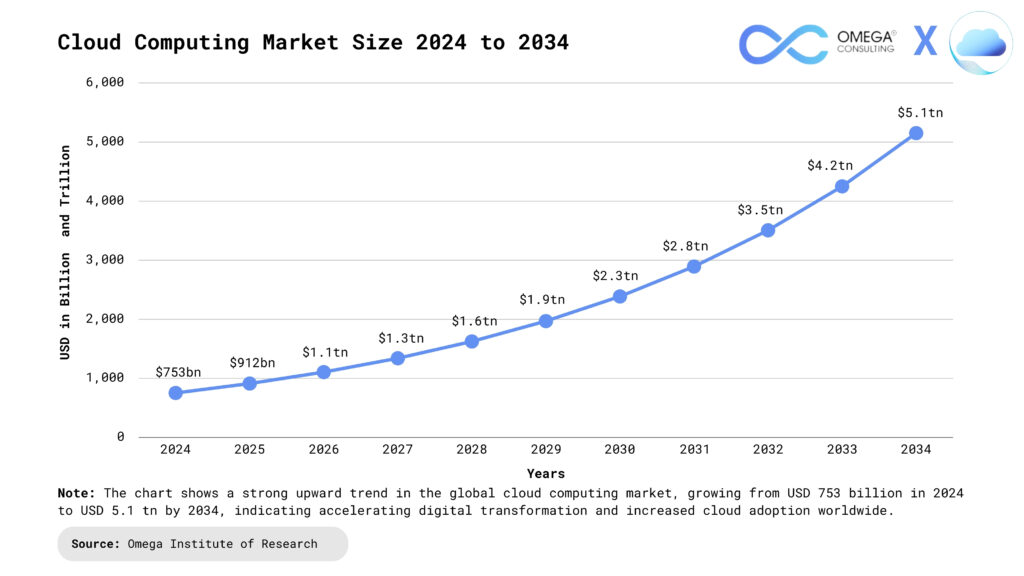
Conclusion
The cloud operating model is not merely a technical blueprint; it is a strategic imperative for organizations aiming to thrive in the digital age. By redefining how people, processes, and technology interact within a cloud-first paradigm, it enables unprecedented levels of agility, efficiency, and innovation. While the journey to establish a mature cloud operating model presents significant challenges—from cultural shifts and skill gaps to managing complexity and costs—the transformative benefits in terms of accelerated time-to-market, optimized spending, enhanced security, and improved resilience make it a worthwhile endeavor. As cloud technologies continue to evolve, integrating trends like AIOps, serverless computing, and sustainability, the cloud operating model will remain a dynamic and critical framework, shaping the future of IT and business success for years to come.
- https://cloud.google.com/architecture/framework
- https://learn.microsoft.com/en-us/azure/cloud-adoption-framework/operating-model/
- https://www.tierpoint.com/blog/cloud-operating-model/
- https://www.gartner.com/en/documents/4017275
- https://www.mckinsey.com/capabilities/mckinsey-digital/our-insights/how-cios-and-ctos-can-accelerate-digital-transformations-through-cloud-platforms
- https://www.clouddefense.ai/future-of-cloud-computing/#:~:text=Artificial%20Intelligence%20is%20the%20future,self%2Dmaintenance%20of%20the%20system.
Subscribe
Select topics and stay current with our latest insights
- Functions